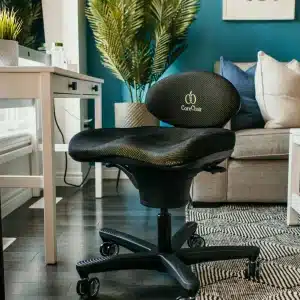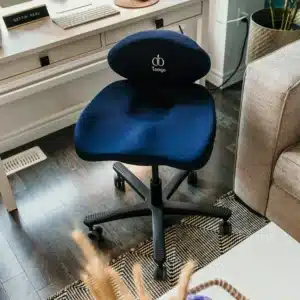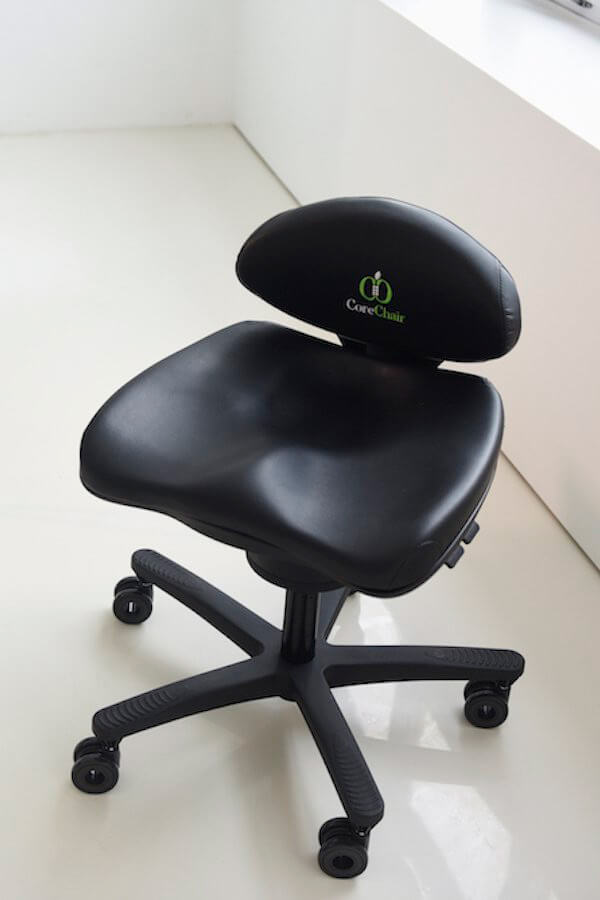The commercial success of a product is often limited by the market acceptance, especially if radical change is introduced. Fortunately for these new innovations, early adopters tend to be the open-minded purchasers who are seeking these significantly different solutions.
The typical cautious approach to new product design is often limited to subtle changes. These changes may introduce a more effective mechanical solution, new materials or a cooler look. A bold design that aspires to introduce a new approach in solving an evident challenge must lead the way into uncharted territories, identify the early adopters and appeal to their adventurous spirit. To be truly effective, this disruptive innovation must provide confidence to the consumer that they are not being seduced into a fad or “fake news” on what this innovation can do for them.
CoreChair is a disruptive innovation. The traditional ergonomic office chair and its classic design with a flat seat, tall back and arm rests, has been employed and accepted as a standard for almost 100 years. Standing Offers within Government define office chairs in this fashion. Corporate facility managers seeking standardization define their organizational needs after this. Traditional ergonomists reflect on their training and the rationale for this design approach. Yet, the research clearly identifies that while these well-established design features may be comfortable, they contribute significantly to what has become known as “sitting disease” or the sedentary effect of not moving.
This active sitting approach presented by CoreChair addresses sitting posture, comfort and introduces movement. Movement as a feature alone could have been achieved by adding this to a traditional chair design but the development process did not stop here. The intent was a whole new way to sit that was a healthy and comfortable solution. Most people intuitively understand the design intent but change does not come easy especially when we are accustomed to lounging in our current sitting solution.
CoreChair has invested in a diverse strategy to alleviate the natural tendency to resist change. Independent studies have been conducted by renowned researchers at prestigious centers of excellence such as: The University of Waterloo with Dr. Jack Callaghan; The University of Guelph with Dr. Leah Bent; Cornell University with Dr. Alan Hedge; Memorial University with Dr. Diana DeCarvahlo; and combined efforts from The Mayo Clinic and Arizona State University with Dr. James Levine.
Engineering was completed by leading Toronto based engineers at Inertia Engineering and Design, with serious attention to detail. This active sitting solution has also undergone BIFMA ANSI testing to exceed 1 million cycles of durability.
In many cases this is still not enough to overcome the very powerful resistance to change, so CoreChair offers a 8-year warranty that speaks to the quality and durability as well as a 60-day satisfaction guarantee.
Many disruptive innovations experience delays in market acceptance even when they have done their homework extremely well. Examples most recently: The Dyson vacuum, while in the not too distant past: IBM and Apple Computers, cell phones by BlackBerry, Apple and Samsung. Even back in the day: Ford Motor Company introduces the automobile!
Early adopters seem to seek out these disruptive innovations. Once they have demonstrated their acceptance then others will consider checking it out.
This process takes time so disruptive innovators need to do their homework and exercise patience.
The reward for these innovators is their early arrival on the market and an opportunity to establish their product and brand ahead of others.










